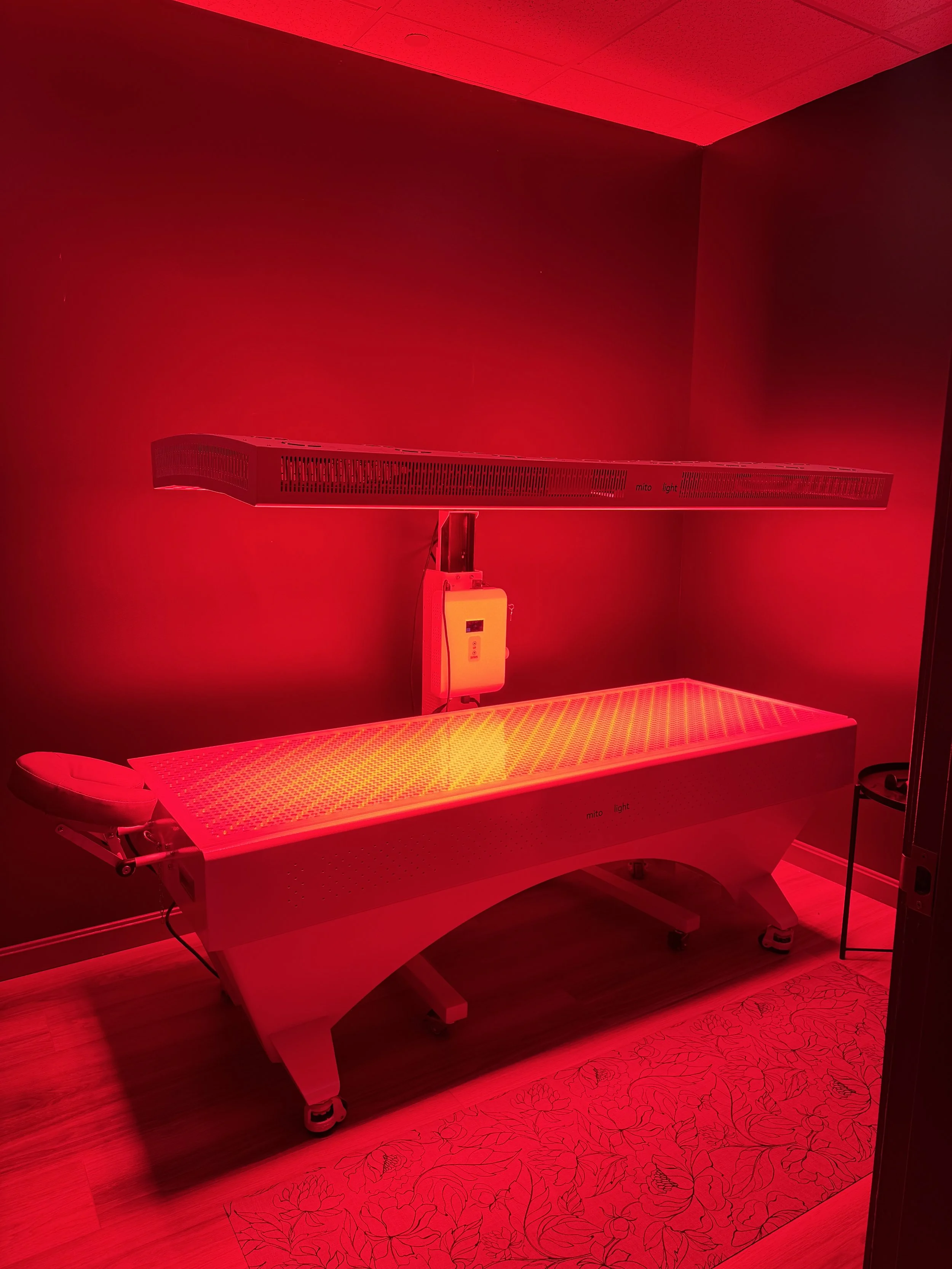Red Light Therapy
“Photobiomodulation”
We are very excited to offer Red Light Therapy otherwise known as Photobiomodulation (PBM).
PBM is a therapeutic technique that utilizes light to promote healing and regeneration in tissues. This method involves the application of low-level lasers or light-emitting diodes (LEDs) at specific wavelengths to treat the skin and other parts of the body.
Research has shown that PBM can be beneficial for various conditions, including pain relief, wound healing, reduction of inflammation and can support muscle recovery (1, 2, 3).
We have a full length red light bed which has over 4,200 high powered LED’s and utilizes special lenses to focus on the body. There are 4 spectrums of light in the bed (Red - 630, 660 and NIR - 810 & 850)
-
This depends on what you are trying to work on but a general rule of thumb is about 7-10 minutes to start with. Typically a max of about 15-20 minutes up to 6 times per week
People who are sensitive or getting over a recent illness may need to go slow initially and start with just a few minutes at a time
-
Temporary relief of minor muscle pain
Temporary relief of joint pain or minor arthritis pain
Relieving stiffness
Muscle spasms
Promoting relaxation of muscle tissues
Temporary increase in local blood circulation
-
These are the situations in which RLT would never be used. Research is still being done in many of these but for now these would be the times when one would avoid RLT:
Recent burns (that have occurred in the past 24-48 hours)
Malignant cancers - RLT is used to improve the proliferation of cells in a wound. So encouraging cell production in a situation of a cancer could cause growth or spread of the cancerous cells. It is possible that it may be safely used in certain situations but more research is needed so further discussion with your oncologist would be needed
Hyperthyroidism: RLT may stimulate the thyroid and cause further symptoms of hyperthyroidism
Epilepsy: there is a possible flicker of the LED lights which is invisible to the eye but could trigger a seizure in someone who is very sensitive
Pregnancy: It is unlikely that RLT would negatively affect pregnancy but due to the fact that there is no research on RLT in pregnancy, it is not recommended
Eye Disease: The effects of RLT on the eyes is being investigated so we recommend that people use caution with their eyes and wear glasses or goggles while using the RLT bed
Light Sensitivity: If you have a previous sensitivity to light then you should avoid RLT unless you have been cleared by your physician
-
These are the times when treatment with RLT should most likely be avoided. Every situation is different so if you are not sure just ask
Fever or infection
Systemic Lupus Erythematosus (SLE) - those with SLE can be more sensitive to light and so in general it would be recommended that they avoid RLT
Severe bleeding or blood loss - it is possible that RLT may slow the body’s ability to stop bleeding so in a situation of severe bleeding or blood loss RLT should be avoided
Use of photosensitizing medicines - as mentioned above when you are sensitive to light you should avoid RLT
Red Light Therapy Research:
Effects of low-power light therapy on wound healing: LASER x LED
Low-intensity LASER and LED (photobiomodulation therapy) for pain control of the most common musculoskeletal conditions
Effects of Light-Emitting Diode Therapy on Muscle Hypertrophy, Gene Expression, Performance, Damage, and Delayed-Onset Muscle Soreness




